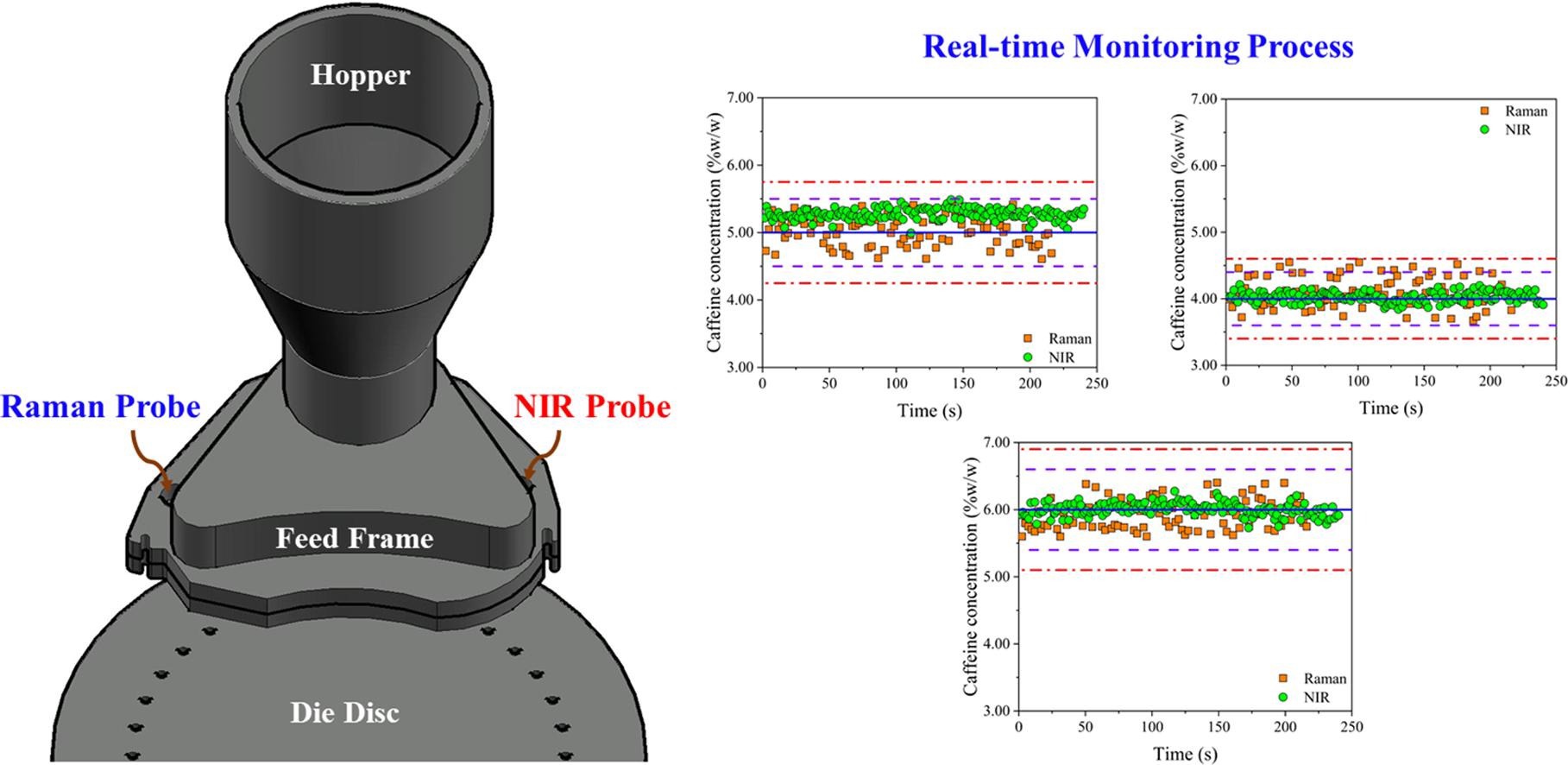Quantitative analysis of blend uniformity within a Three-Chamber feed frame using simultaneously Raman and Near-Infrared spectroscopy

This study reports the use of Raman and Near-infrared (NIR) spectroscopy to simultaneously monitor the drug concentration in flowing powder blends within a three-chamber feed frame. The Raman probe was located at the top of the dosing chamber, while the NIR probe was located at the top of the filling chamber. The Raman and NIR spectra were continuously acquired while the powder blends flowed through the feed frame. Calibration models were developed with spectra from a total of five calibration blends ranging in caffeine concentration among 3.50 and 6.50% w/w. These models were optimized to predict three test set blends of 4.00, 5.00, and 6.00% w/w caffeine. The results showed a high predictive ability of the models based on root mean square error of predictions of 0.174 and 0.235% w/w for NIR and Raman spectroscopic models, respectively. Concentration profiles with higher variability were observed for the Raman spectroscopy predictions. An estimate of the mass analyzed by each spectrum showed that a NIR spectrum analyzes approximately 4.5 times the mass analyzed by a Raman spectrum; despite these differences in the mass analyzed, blend uniformity results are equivalent between techniques. Variographic analysis demonstrated that both techniques have significantly low sampling errors for the real-time monitoring process of drug concentration within the feed frame. Continue reading here
Nobel O. Sierra-Vega, Rafael A. González-Rosario, Raúl S. Rangel-Gil, Rodolfo J. Romañach, Rafael Méndez,
Quantitative analysis of blend uniformity within a Three-Chamber feed frame using simultaneously Raman and Near-Infrared spectroscopy,
International Journal of Pharmaceutics, Volume 613, 2022, 121417, ISSN 0378-5173,
https://doi.org/10.1016/j.ijpharm.2021.121417.

